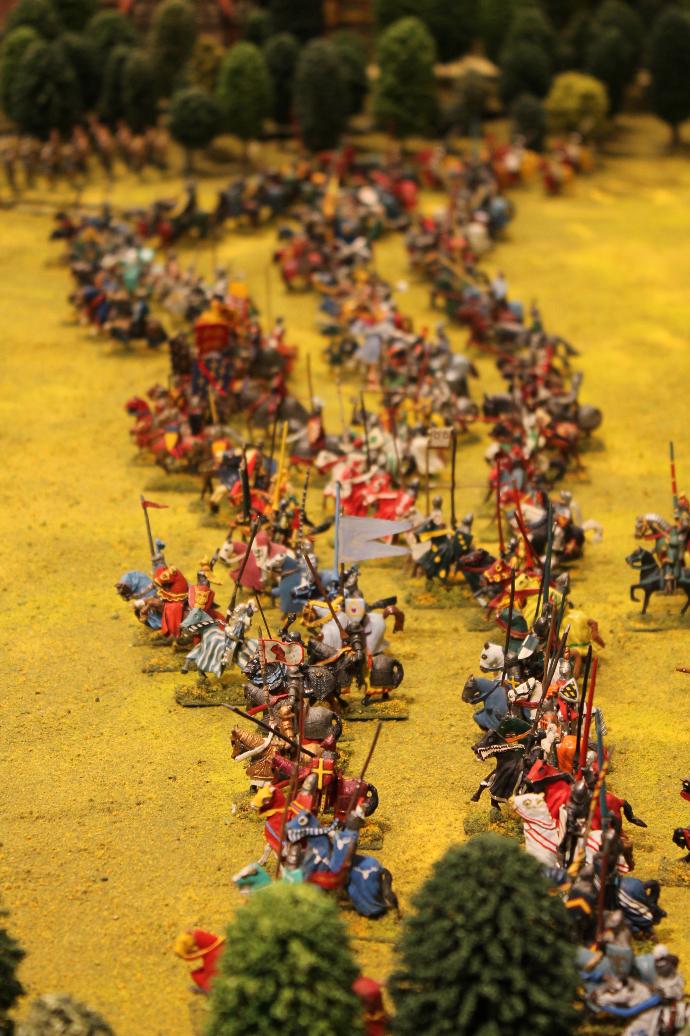On Oct 25, 1415 the English army of Henry V faced a superior French force in northeastern France. The French army of 10,000 or more was mostly footmen at arms, but also contained some 1200 cavalry. The English army was somewhat smaller, maybe as many as 8000, of which about 6000 were longbowmen. The French were awaiting further reinforcements, particularly more cavalry, and so did not initiate the battle. Henry's army was tired and hungry from the campaign and he needed to bring about a quick battle. Henry advanced his force to within bowshot and peppered the French mounted force until they charged the English archers. In fact, the force of 1200 cavalry split against the two forces of English archers who were massed on the flanks and somewhat ahead of the English main force.

The English army awaits battle. Henry dismounted his troops and posted his archers on the flanks. The narrowness of the battlefield would prove decisive.
Though the mainstay of the English defense was its dismounted knights and men-at-arms, it was the massed archers who would prove decisive.
The English royalty. Later in the day Henry would dismount and fight on foot, at one time leading his personal guard to the rescue of his brother who was down on the field.
The greater part of the French force was formed in three lines of footmen and knights, clad in full armor. The front two lines crossed the wet, plowed field, churned up by the cavalry attack and made some headway against the English main battle line before they were taken on the flanks by the masses of English bowmen. The wet, muddy ground and the weight of armor proved too much and as the cumbersome formation edged forward hoping to take English knights for ransom they were hard pressed by their own number and personal gear. As men fell out they became easy prey for the English archers who despatched them as they lay in the mud unable to rise in their armor. Ultimately some 3000 were captured and some or all of them were executed by orders of Henry, whose force was spent and still facing a third line of French infantry. These remaining French witnessed the fate of their comrades and quit the field.
The English line was anchored by the villages of Agincourt on the left and Tramecourt on the right.
The view from the rooftops
The English camp was raided by a mounted party of French. The only thing that went well for the French that day.
The spectacle of battle as witnessed from behind the French army.